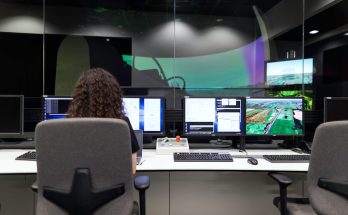As the world grapples with the growing impacts of climate change, the urgent need for sustainable solutions has never been more apparent. Among the key enablers of a more sustainable future is green technology—a broad term encompassing innovations and practices aimed at reducing environmental harm, conserving resources, and promoting long-term ecological balance. From renewable energy and waste reduction to clean transportation and sustainable agriculture, green technology is playing a pivotal role in shaping a healthier and more resilient planet. This blog post explores the role of green technology in creating a sustainable future and highlights the key areas where it is making a difference.
1. Renewable Energy: Powering the Future Sustainably
One of the most significant areas of green technology is renewable energy, which involves generating electricity from sources that are naturally replenished, such as solar, wind, hydro, and geothermal power. These sources produce little to no greenhouse gas emissions compared to fossil fuels, making them critical in the fight against climate change.
Solar Power: The use of photovoltaic (PV) cells to convert sunlight into electricity has seen rapid growth. Solar panels are becoming more efficient, affordable, and accessible, enabling homes, businesses, and even entire cities to transition away from coal, oil, and gas.
Wind Energy: Onshore and offshore wind farms are increasingly contributing to the global energy mix. Advances in turbine technology are allowing for greater energy output even in regions with lower wind speeds.
Hydropower and Geothermal: While less scalable in some regions, hydropower remains a key source of clean energy, particularly in countries with abundant water resources. Geothermal energy, which harnesses heat from beneath the Earth’s surface, offers a reliable and steady energy supply with minimal environmental impact.
As renewable energy capacity expands, the world moves closer to achieving net-zero emissions, reducing the reliance on fossil fuels, and stabilizing global temperatures.
2. Energy Storage and Smart Grids: Enhancing Efficiency and Reliability
Renewable energy sources, such as solar and wind, are intermittent by nature, creating challenges for consistent energy supply. This is where energy storage technologies and smart grid systems come into play.
Battery Storage: Lithium-ion batteries and emerging alternatives like solid-state batteries are revolutionizing the way we store energy. Large-scale battery storage systems allow excess energy generated from renewable sources to be stored for later use, ensuring a stable supply even when the sun isn’t shining or the wind isn’t blowing.
Smart Grids: Smart grids integrate digital technology with traditional energy networks, enabling more efficient distribution of electricity. They can detect and respond to changes in energy demand, automatically balance loads, and integrate renewable energy more effectively into the grid. By optimizing energy use and reducing waste, smart grids contribute significantly to sustainability goals.
The combination of energy storage and smart grids is vital for enabling a more resilient, efficient, and sustainable energy system that can meet the demands of a growing population without compromising the environment.
3. Sustainable Transportation: Driving Towards a Greener Future
Transportation is one of the largest contributors to global greenhouse gas emissions. Green technology is transforming this sector through the development of electric vehicles (EVs), alternative fuels, and smart mobility solutions.
Electric Vehicles: The adoption of EVs is accelerating worldwide, thanks to advancements in battery technology, lower costs, and expanded charging infrastructure. EVs produce zero tailpipe emissions, making them a cleaner alternative to internal combustion engine vehicles. Governments and automakers are increasingly committing to phasing out petrol and diesel vehicles in favor of electric models.
Hydrogen Fuel Cells: In addition to battery-powered EVs, hydrogen fuel cell vehicles are gaining traction, especially in heavy-duty applications like buses and trucks. Hydrogen fuel cells produce only water vapor as a byproduct, making them a zero-emission solution for transportation.
Shared Mobility and Public Transit: Smart transportation solutions, including ridesharing, carpooling, and improved public transit, reduce the number of vehicles on the road, leading to lower emissions and less congestion. Urban planning that prioritizes bike lanes, pedestrian areas, and accessible public transportation is also essential for building sustainable cities.
The transition to sustainable transportation not only reduces emissions but also improves air quality and enhances the overall livability of cities.
4. Sustainable Agriculture and Food Production: Feeding the World Responsibly
With a growing global population, the demand for food is rising, putting immense pressure on natural resources. Green technology in agriculture focuses on producing more food with fewer resources while minimizing environmental damage.
Precision Farming: Using GPS, IoT sensors, and data analytics, precision farming allows farmers to optimize resource use, such as water, fertilizers, and pesticides. This reduces waste, lowers costs, and minimizes the environmental impact of farming practices.
Vertical Farming and Hydroponics: In urban areas, where land is scarce, vertical farming and hydroponic systems offer a sustainable solution by growing crops in stacked layers or water-based environments. These methods use significantly less water and land compared to traditional farming, while also reducing the need for harmful chemicals.
Regenerative Agriculture: Regenerative farming practices focus on restoring soil health, enhancing biodiversity, and capturing carbon in the soil. Techniques such as crop rotation, cover cropping, and reduced tillage help build resilient agricultural systems that are both productive and sustainable.
Green technology in agriculture not only ensures food security but also addresses the environmental challenges associated with conventional farming, making it a key pillar in the push for a sustainable future.
5. Waste Management and Circular Economy: Closing the Loop
Traditional models of production and consumption have led to a linear “take, make, dispose” economy that generates vast amounts of waste. Green technology is driving a shift towards a circular economy, where materials are reused, recycled, and repurposed rather than discarded.
Recycling Innovations: Advanced recycling technologies are enabling the recovery of valuable materials from waste streams that were previously difficult to process. Chemical recycling, for example, breaks down plastics into their original components, allowing them to be reused in new products.
Biodegradable and Compostable Materials: Green technology is also promoting the development of biodegradable and compostable alternatives to traditional plastics. These materials break down more easily in the environment, reducing pollution and the burden on landfills.
Waste-to-Energy Solutions: Converting waste into energy is another area where green technology is making an impact. Waste-to-energy plants can produce electricity or heat by incinerating non-recyclable waste, providing an alternative energy source while reducing landfill volumes.
By embracing the principles of a circular economy, industries can reduce waste, conserve resources, and lower their environmental footprint.
6. Green Building and Sustainable Urban Planning: Creating Eco-Friendly Cities
As more people move to urban areas, sustainable urban planning and green building practices are essential for reducing the environmental impact of cities.
Energy-Efficient Buildings: Green buildings are designed with energy efficiency in mind, incorporating features like high-performance insulation, solar panels, energy-efficient lighting, and smart thermostats. These buildings not only reduce energy consumption but also lower operational costs.
Sustainable Materials and Construction: The use of sustainable building materials, such as recycled steel, reclaimed wood, and low-carbon concrete, is becoming more common. Additionally, green construction techniques focus on reducing waste, conserving water, and minimizing the carbon footprint of construction projects.
Urban Green Spaces and Biodiversity: Integrating green spaces, such as parks, gardens, and green roofs, into city planning enhances biodiversity, improves air quality, and provides recreational areas for residents. Sustainable urban planning also considers walkability, public transportation, and water management to create more resilient and livable communities.
By prioritizing green technology in urban development, cities can become more sustainable, healthier, and better equipped to handle future challenges.
7. The Role of Policy and Collaboration in Advancing Green Technology
While technological innovation is crucial, it must be supported by policies and collaborative efforts across sectors to drive widespread adoption. Governments play a key role by implementing regulations, offering incentives, and setting ambitious targets for carbon reduction and sustainability.
Government Incentives and Subsidies: Policies that provide financial support for renewable energy projects, electric vehicles, and green infrastructure can accelerate the transition to a sustainable economy.
International Collaboration: Climate change is a global challenge that requires coordinated action. International agreements, such as the Paris Agreement, set the framework for countries to work together in reducing emissions and advancing green technology.
Public-Private Partnerships: Collaboration between governments, businesses, and non-profit organizations can drive innovation, scale green technology solutions, and address complex sustainability challenges.
By fostering an enabling environment, policymakers and stakeholders can ensure that green technology continues to advance and becomes the foundation of a sustainable future.
Conclusion
Green technology is more than just a set of innovations; it represents a fundamental shift in how we approach development, resource use, and environmental stewardship. From renewable energy and sustainable transportation to waste management and green building, these technologies are paving the way for a future where economic growth and environmental protection go hand in hand.
Creating a sustainable future requires not only technological solutions but also a commitment from individuals, businesses, and governments to embrace sustainable practices. By investing in green technology, supporting sustainable policies, and making environmentally conscious choices, we can build a world that is not only prosperous but also resilient and capable of supporting future generations.
In the journey toward sustainability, green technology is the catalyst that will drive meaningful change, helping us meet today’s needs without compromising the ability of future generations to meet theirs.



